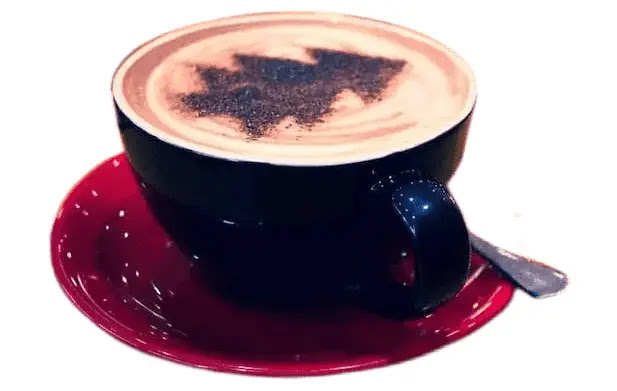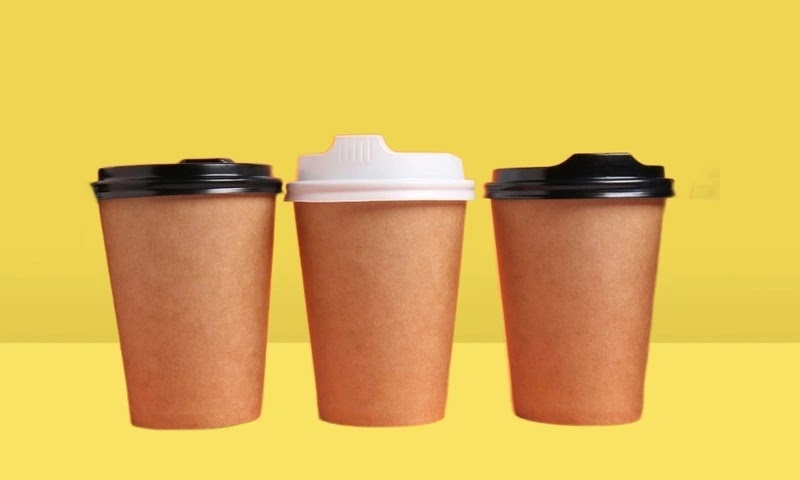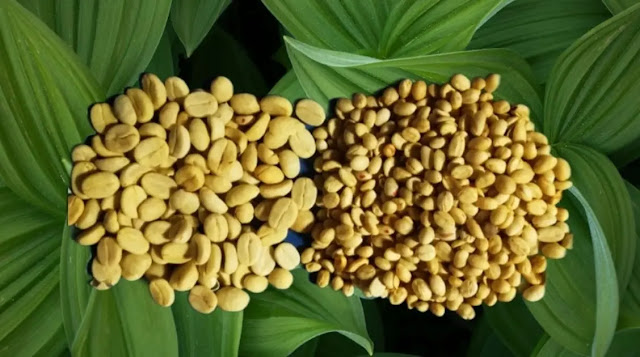The history of coffee is ancient, it has been more than 4 centuries since the arrival of coffee in Europe. This energy drink was quickly appreciated over time, both for its properties and for its social character. We gladly share a cup of coffee during the discussion, and that's always since. Perhaps it is this aspect of sharing and exchange that has made it controversial at times.
These small grains, so innocuous for us today, have long been at the heart of the controversy, and bans, sometimes even leading to revolts throughout history, both in their country of origin and in France. It was only after a long journey, historical and geographical, that coffee became the drink we know today.
How did these coffee “cherries” from Ethiopia spread around the world to give one of the most consumed products in the world today? How have simple coffee beans managed to endanger kings and emperors throughout history, from the Arab world to Europe?
THE DISCOVERY OF COFFEE
The legend says that it is to a shepherd of Abyssinia (now Ethiopia) that we owe the discovery of coffee. It was when he saw that his goats were more agitated than usual after having ingested the fruits of a shrub that he decided to try to consume some himself. He is therefore the first to have noticed the energizing effect of the caffeine contained in the cherries of the arabica coffee plants.
He then shared his discovery with the local Sufi community. The latter made a decoction of it in water, which they quickly appreciated because it allowed them not to fall asleep during prayer.
Despite the beauty of legends, science tends to rationalize the facts to bring out the truth. This is how a biological study revealed the origin of coffee.
As for the first written trace relating to coffee, it dates from the 9th century, in a medical work, which will then be taken up by Avicenna, a Persian doctor, and philosopher, who will quote it in the "Canon of medicine" written in the 11th century. century. He describes the effects of coffee and caffeine on the body, more particularly on the digestive system.
Over the following centuries, coffee would cross the borders of the countries of the Orient, thanks in particular to travelers on pilgrimage to Mecca. They took with them the precious grains giving them energy for their long journey. The spread then took place towards Yemen and the rest of the Arab world, making the plant ever more popular and appreciated.
THE BEGINNINGS OF COFFEE CULTURE
Scientific research attests to the fact that it was in Yemen that the cultivation of coffee trees began. At the time of Suleiman the Magnificent, sultan of the Ottoman Empire who reigned over much of the Mediterranean basin and central Europe, the domestication and cultivation of coffee began.
Mastering the production of the plant as well as the roasting of the beans, the Ottoman people consumed coffee in a common way. Over the course of the conquests made by this Sultan during the 15th century, consumption, therefore, began to spread in the various annexed countries, making this beverage increasingly popular, well beyond the borders of Ethiopia and Yemen.
It was then in Moka that most of the trading took place at the time. It is in this port that most of the coffee destined for trade is transited to other countries.
COFFEE, A CONTROVERSIAL DRINK
It was in the 16th century that the first coffees began to emerge in Egypt and the region around Mecca. People came there to drink the famous beverage, chat, and exchange ideas, all surrounded by people from all walks of life. It was at the same time that for the first time in history a leader questioned the right to consume coffee. As the Quran says, any intoxicating substance is forbidden for consumption. It was the Sultan of Cairo who lifted this ban with the backing of medical arguments, and asserted that the consumption of coffee was perfectly in keeping with the laws enacted by Allah himself!
A similar episode took place when cafes opened in Syria, attracting scientists, scholars, and scholars of the time. Despite the bans, the controversial drink continued to be drunk and enjoyed by more and more consumers across the Arab world.
Under the guise of non-compliance with religious laws, the authorities feared the birth of bubbles of protest in cafes .They exchanged ideas, ways of thinking, sometimes questioning the established power. The energizing preparation exacerbated the scholars, leading them to share their doubts, and giving rise to new currents of thought. As often, the novelty frightens the authorities! The coffee bean therefore alone represented defiance of authority and the possibility of questioning the very order of society or the religion in place.
However, at that time, we began to find more and more places offering coffee in Baghdad, Istanbul, Damascus, as well as in many cities of the Arab world. Nothing stopped its expansion and distribution, not even religious and political authorities.
THE ARRIVAL OF COFFEE IN EUROPE
It was Italian traders, specializing in the spice trade between the East and Europe, who first introduced coffee to Europe. It was at the beginning of the 17th century that the first coffee beans were taken to Italy. Only a few years later, the famous drink began to spread, first among monks and traders, then among the people. The entourage of the pope at the time, Clement VIII, advised him to ban coffee, declaring it an infidel's drink. Coming from Muslim countries, the cardinals surrounding the Holy Father took a dim view of the fact that this drink was introduced on the other side of the Mediterranean. The latter did nothing. After tasting it, he declared that it would have been a shame to leave the pleasure of this drink to the infidels alone!
Dutch merchants also allowed the famous grains to travel. At the time, Ottoman traders scalded coffee beans so that they could not germinate. However, Pieter Van der Broecke, captain of a Dutch merchant ship managed to obtain some intact seeds. They are the ones that were used to introduce plantations in Europe, Asia, and the West Indies!
In parallel, in the middle of the 17th century, cafes began to open in England. Once again, intellectuals and free thinkers met there to exchange and discuss. It did not take more for the prosecutor of King Charles II to declare the mandatory closure of these places, where liberal ideas and pamphlets were widely shared among the protesters of the time. Faced with the revolt of the people, the ban will be quickly lifted, and only 50 years later England had nearly 2000 cafes spread throughout the British territory.
In France, it was in Marseille that coffee was introduced to the territory. Imported from Egypt on the initiative of a merchant from Marseilles in 1644, consumption quickly became popular, enough for the first French coffee to see the light of day in Marseilles city in 1671. It was not until 1669 that the precious roasted beans arrived in Paris, with the visit of Soliman Aga, emissary of the Sultan of the Ottoman Empire. Besides the fact that the attempt to bring France and Turkey together was a fiasco, Soliman allowed King Louis XIV to taste the beverage that was gradually spreading in the courts of Europe.
Did you know? It is in France that for the first time percolation will be used for the preparation of coffee. Until then, only the infusion allowed the preparation of the grains.
In 1715, it was the mayor of Amsterdam who offered a few coffee trees to Louis XIV when he signed the “coffee treaty”. The latter hastened to entrust them to the gardeners of the Jardin du Roi, who took the greatest care of them. This is how a few years later, under the reign of Louis XV, plants will be introduced to Reunion, to Bourbon, thus allowing France to become autonomous by possessing its plantations. It is then in Martinique and then in Guadeloupe that coffee trees will be introduced to guarantee the production necessary for the French kingdom.
Meanwhile, Austria and Germany had also succumbed to the pleasure of coffee. Establishments offering the now famous drink were born there from the end of the 17th century. It was following the route of the Turkish army that the Viennese tasted coffee, thanks to the discovery of a stock of green cherries left behind. It was a Pole who took advantage of this windfall and opened the first Viennese establishment.
The logical continuation of this expansion was to take coffee across the Atlantic, to America.
THE INTRODUCTION OF COFFEE TO THE REST OF THE WORLD

First, coffee reached North America in 1689. Although largely populated by tea-loving English immigrants, the country quickly made it the national drink. The episode of the Boston Tea Party, during which the stocks of English tea were sunk by the North American inhabitants marked a real split with the British crown, which drew an undeniable economic advantage from the taxes collected thanks to tea exports. It was then coffee that supplanted English tea.
Over time, to meet European demand, coffee was introduced to South America, Brazil and Colombia in particular, where cultivation would represent a significant part of the income from the land. Unfortunately, it is thanks to slavery that production will be ensured, benefiting only the owners of huge farms worked by slaves.
At the same time, coffee trees were taken to India, then a British colony, to ensure the establishment of sufficient plantations to ensure the consumption of the British Empire. Unfortunately, all the plantations suffered from a disease, which had to be replaced by tea, which was more resistant to local conditions.
The Dutch crown planted its crops in its colonies in Indonesia.
Today, all of the production comes from countries whose latitude allows the cultivation of coffee. We talk about the “coffee belt”. Thus, we find them in Central America for example (Mexico, Guatemala, Nicaragua, Honduras, etc…), in South America (Colombia, Brazil, Ecuador, Peru, etc…), in Africa (Ethiopia, Ivory Coast, etc…), as well as in Asia (Vietnam, Indonesia, etc…). Given the conditions necessary for the conservation of plantations, it is in countries where the flora is tropical that the coffea shrub is generally cultivated. Although robusta and arabica do not require the same configurations to grow, it is nevertheless necessary that the temperatures are favorable for the plants of the two species to grow properly.
COFFEE TODAY
Even if it is the arabica variety which has long dominated the whole of world consumption, robusta has come to modify the habits of consumers, allowing them to choose between a full-bodied coffee loaded with caffeine (robusta) and a more aromatic and less bitter (arabica). Many brands offer blends to help mitigate the effect of one, or accentuate the bitterness of the other.


























